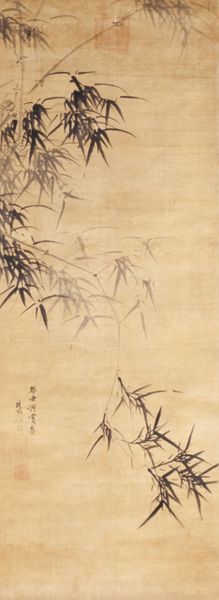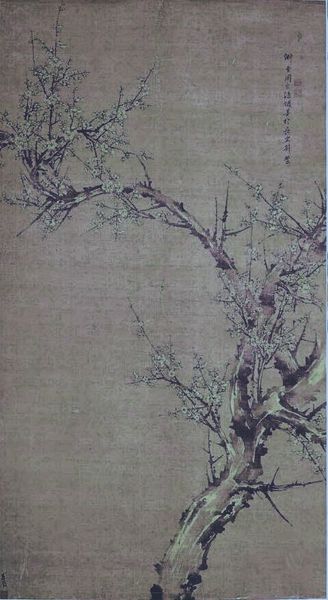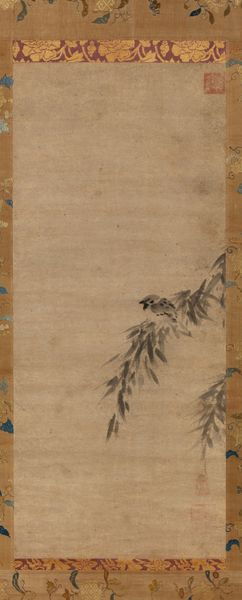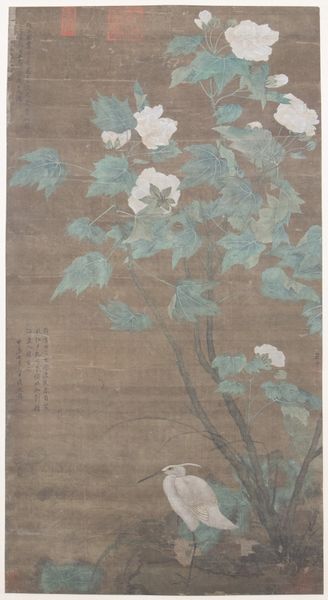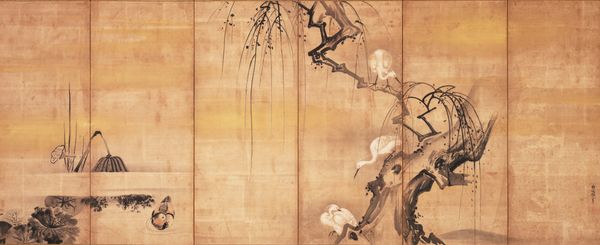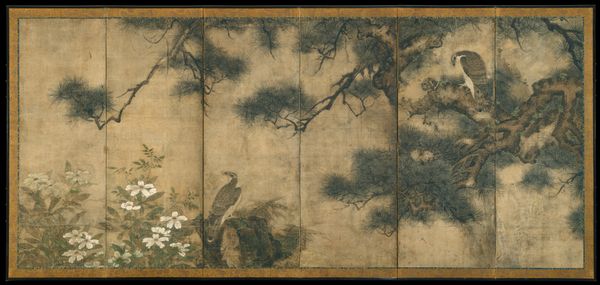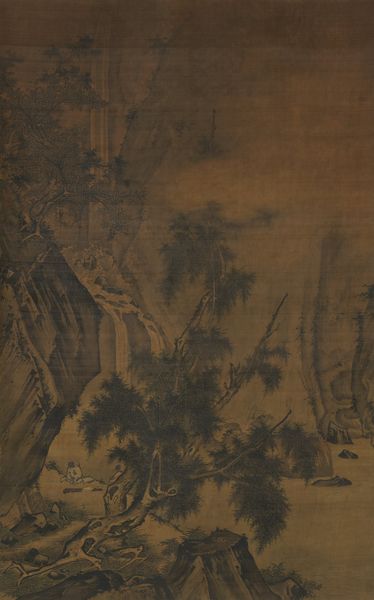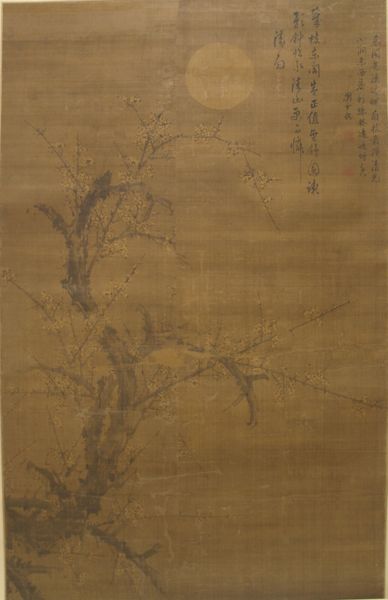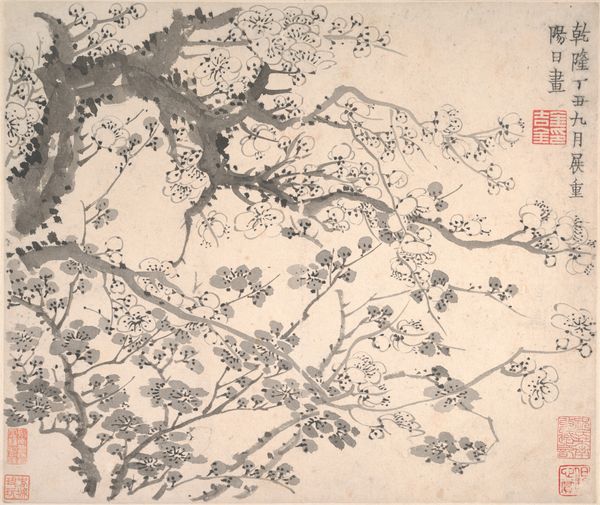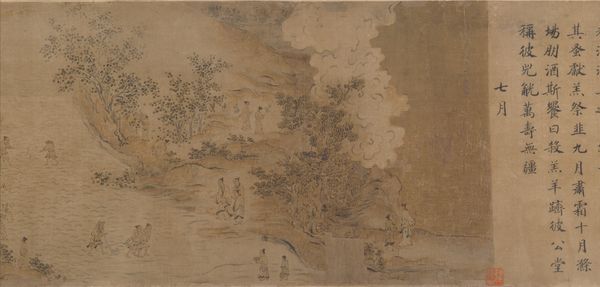
Lin Hejing Searching for Plum Blossoms c. late 16th century
0:00
0:00
paper, hanging-scroll, ink
#
asian-art
#
landscape
#
japan
#
paper
#
hanging-scroll
#
ink
#
yamato-e
#
calligraphy
Dimensions: 30 1/2 × 10 5/8 in. (77.47 × 26.99 cm) (image)60 5/8 × 15 3/8 in. (153.99 × 39.05 cm)
Copyright: Public Domain
Curator: Here we have "Lin Hejing Searching for Plum Blossoms," a hanging scroll attributed to Kano Gyokuraku, likely created in the late 16th century. It’s ink on paper. Editor: It's austere, almost monochromatic. The paper itself is doing so much work here, isn’t it? It has this beautiful texture. Curator: Absolutely. It demonstrates Yamato-e techniques. This particular artwork uses a very subtle palette to portray Lin Hejing, a recluse famous for his love of plum blossoms. It’s interesting because he’s often portrayed WITH the plum blossoms! Here, the figure is in search of it. It may reflect how people engage with nature and literature in Japanese painting. Editor: The process… Imagine the hours. Layering the ink. The specific type of paper and brushes used! Each stroke conveys a reverence, a connection to the landscape that I find missing sometimes. I wonder about the craftspeople involved. Were they attached to the imperial court? Independent ateliers? How did that context affect the production of this imagery? Curator: The Kano school, to which Gyokuraku belonged, rose to prominence during the Muromachi period. They did serve the elite, shaping the visual culture and social identity. They synthesized Chinese painting styles with Japanese aesthetics. Lin Hejing, the recluse, was idealized by them as embodying integrity, intelligence and detachment from public life during this time of upheaval. Editor: Right, and look at the economy of line used to define the robes, juxtaposed with that more detailed rendering of the tree. You sense Gyokuraku grappling with material constraints to elevate it, this delicate balance they struck. This reminds me about the labor invested and choices made. What story does this aesthetic reveal? Curator: The scholar-official as a central figure reflected literati values, showcasing their aesthetic cultivation and taste. The work underscores these as part of that identity within political power during that time. It shows how culture and status went hand in hand. Editor: Looking at it now, thinking about the physical creation, brings another layer of respect. The plum blossom search becomes less romantic and more grounded. Curator: Indeed. I’m struck again by how deeply rooted it is in specific societal values and aesthetic conventions of that period. Editor: It’s beautiful, absolutely. Thank you for sharing your insights.
Comments
minneapolisinstituteofart almost 2 years ago
⋮
The subject of this painting is the poet Lin Hejing, who lived in China during the Northern Song dynasty (960–1127) and whose poetic works were known widely in Japan. He is seen walking below a plum tree and staring into the distance as a young attendant draws up behind him, carrying the branch of a plum tree collected earlier. Lin Hejing was renowned for his love of the plum tree, a first sign of spring that oftentimes blossoms when snow is still falling. Kano Gyokuraku was affiliated with the preeminent Kano house of painters, whose artists dominated the Japanese painting scene for centuries beginning in the late 1500s. Although the Kano house was headquartered in Kyoto, the capital city, when Gyokuraku was active he led a regional branch of the house that was situated in Odawara, a castle town in eastern Japan.
Join the conversation
Join millions of artists and users on Artera today and experience the ultimate creative platform.
